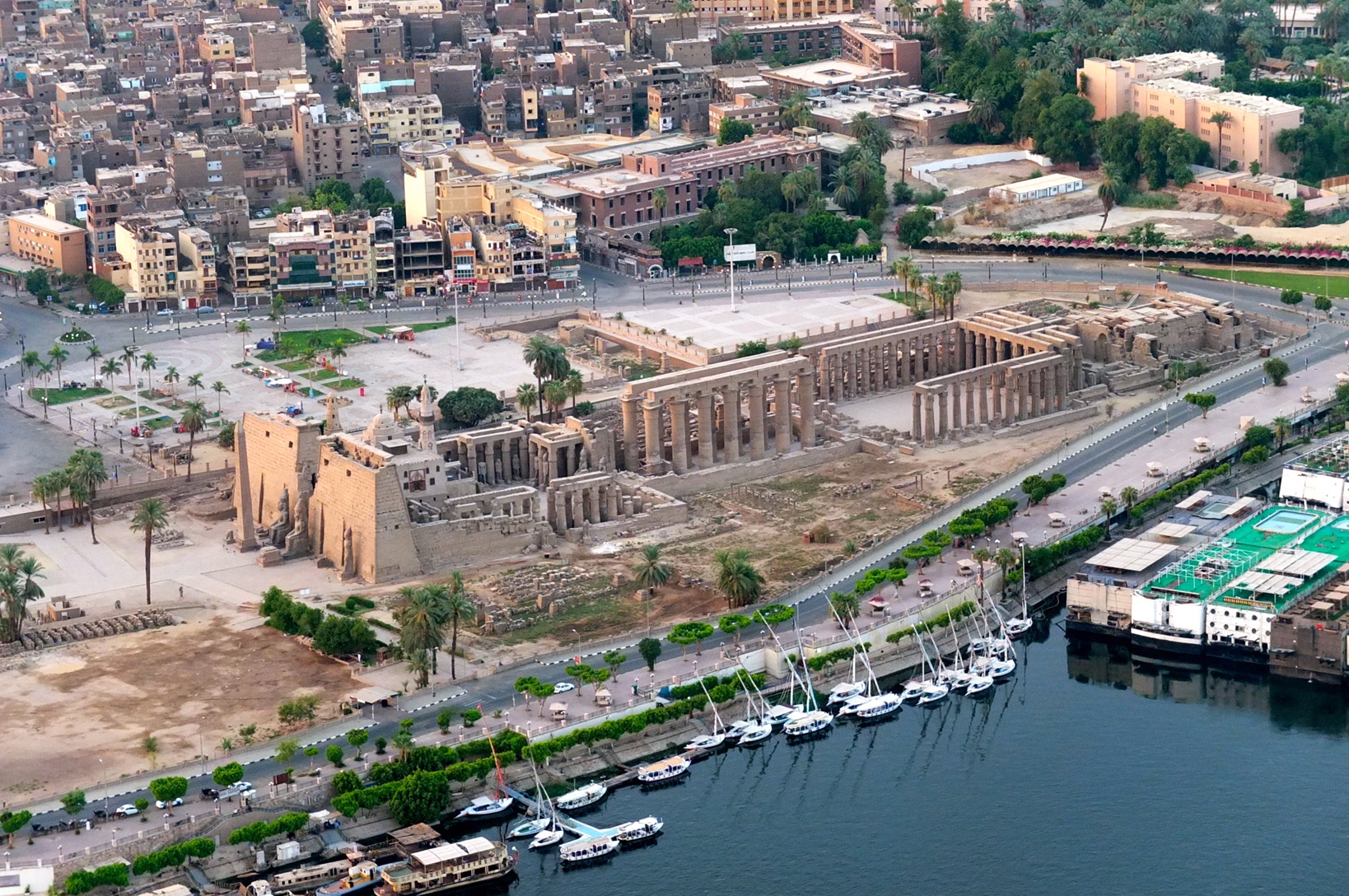Luxor, with a history dating back to 3200 B.C., ranks among the world’s oldest continuously inhabited cities.
Positioned on both banks of the Nile, Luxor was the official capital of ancient Egypt during the Middle and New Kingdoms, with many different names across the centuries.
Aside from being home to a remarkable collection of ancient Egyptian monuments, including the 3,400-year-old Luxor Temple and the Karnak Temple Complex, as well as the necropolises of the Valley of the Kings and the Valley of the Queens, it now stands as a historical, yet modern city, renowned for its necropolises to this day.
Luxor: A City with Many Names
Before there was Luxor, there was Waset, which translates to ‘the city of the scepter’ or ‘city of power,’ the capital of the 4th Upper Egyptian nome, during the Old Kingdom (circa 2686 – 2181 BC). This ancient city emerged as the principal hub for the veneration of the god Amun-Ra, with the Temple of Karnak enshrining his earthly throne.
One of the most well-known ancient names for Luxor was Thebes, the capital of Egypt during the height of the New Kingdom (c. 1550–1070 BCE). It was a political, religious, and cultural center, home to some of Egypt’s most important temples, including the Karnak and Luxor temples.
Another ancient Egyptian name for Luxor was Ta ipet, which means ‘the shrine’ or ‘the harem,’ in Demotic Egyptian. The name refers to the Karnak Temple, which ancient Egyptians called Ipet Sot, meaning ‘the chosen spot’.
Luxor is also called the City of 100 Gates, highlighting the city’s grandeur and the numerous monumental gateways that marked its temples and palaces. It was first called that name by the Greek poet, Homer, in his epic poem, ‘The Iliad’ (the late 8th or early 7th century BC).
The modern name, Luxor, comes from the Arabic term ‘Al-Uqsur,’ which means ‘the palaces’ or ‘the forts,’ due to its grand buildings.
More Than a Historical Place
Aside from being full of archaeological treasures and rich history, Luxor is a modern tourist city. With an international airport, public transportation, cruise ships, fantastic hotels, and resorts, there are housing and real estate options, events and festivals, and museums and cultural centers.
One of the most prominent festivals in Luxor is the Luxor African Film Festival (LAFF), organized by the non-governmental organization, the Independent Shabab Foundation (ISF). This year’s festival was the 13th edition, under the resonant slogan “Africa in All Colors.” The festival featured a diverse array of cinematic talent from across the continent, with 33 countries contributing 42 films competing in four distinct categories.
In Luxor, hot air balloon rides are a regular spectacle, offering breathtaking views of the city’s ancient wonders. Each flight sees dozens of vibrant balloons adorning the sky, carrying over a thousand tourists. These tours are a beloved attraction, providing a panoramic view of Luxor’s majestic Egyptian temples, the serene Nile River, and lush agricultural fields.
Modern museums in Luxor include the Luxor Museum and Mummification Museum. Celebrating ancient Egyptian Art, the Luxor Museum features about 3,000 artifacts from the ancient city of Thebes, located along the River Nile.
The Mummification Museum in Luxor, established to offer profound insights into the ancient Egyptian civilization’s meticulous methods of body preservation, stands as a testament to the enduring fascination with the rituals and practices of the past.
Luxor stands today as a timeless testament to Egypt’s rich cultural heritage and its enduring allure for visitors worldwide.







Comments (0)